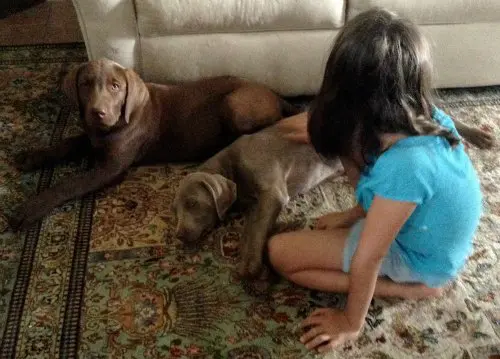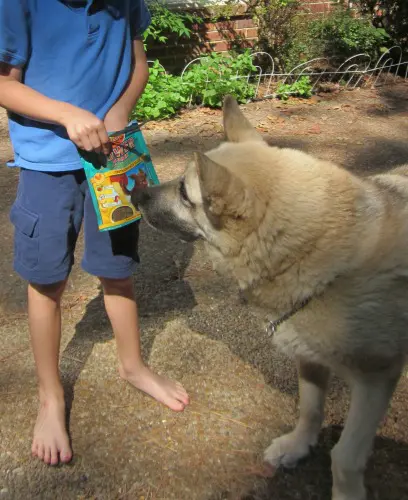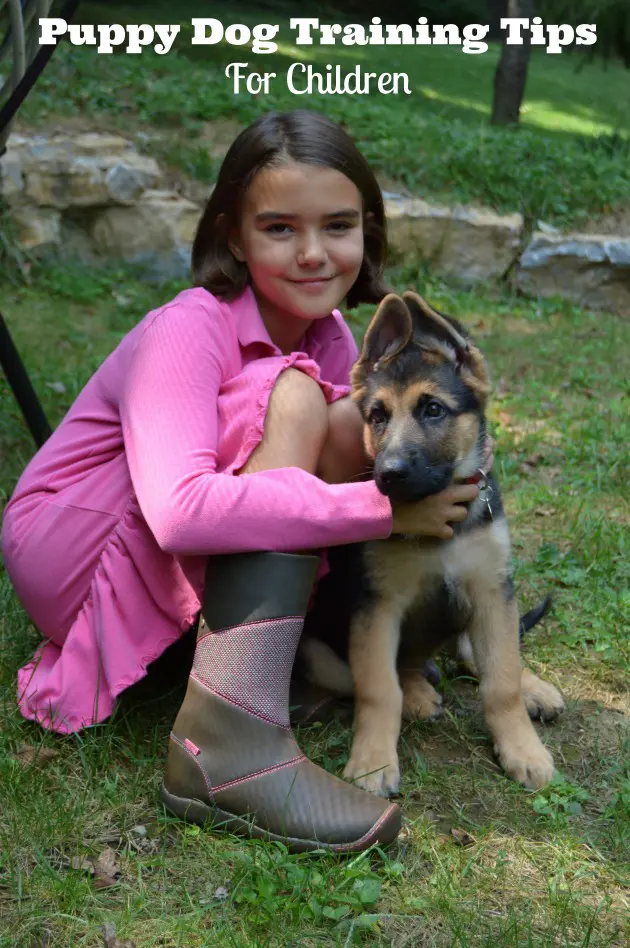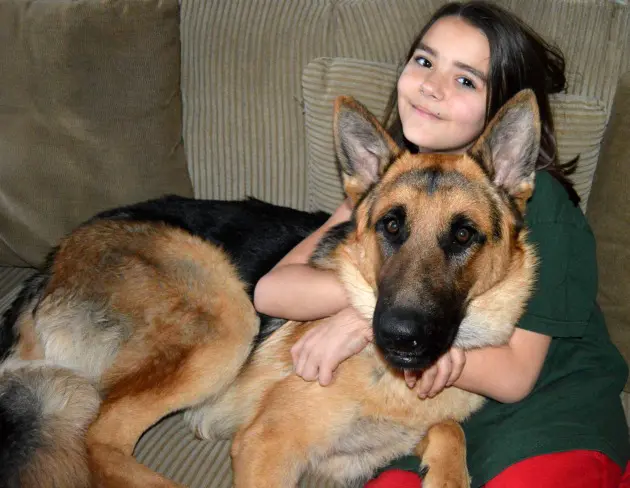Training a puppy involves patience, consistency, and positive reinforcement. Here are some tips to help you train your puppy effectively from house training to basic commands. All dog trainers are well-aware of the importance of consistency. Perhaps one of the most difficult challenges when it comes to training a family dog is ensuring the kids don’t accidentally derail your teachings — after all, their focus is more about playing with the dog than teaching him. One of the best ways to avoid this issue is to get the children actively involved in the puppy dog training. Not sure how? I have included a few ideas to get you started on dog training for kids.

House Training Puppy Dog
Begin training your puppy as early as possible. Puppies are more receptive to learning at a young age. House training a puppy involves teaching them where and when it’s appropriate to relieve themselves. Here are some general tips:
- Establish a Routine: Set a consistent schedule for feeding your puppy and taking them outside. Puppies usually need to go out shortly after eating, playing, or waking up.
- Choose a Designated Bathroom Spot: Take your puppy to the same spot outside each time. The scent will help them associate the area with going to the bathroom.
- Use Positive Reinforcement: Praise and reward your puppy when they do their business outside. This positive reinforcement will help them understand what behavior is desired.
- Supervise Indoors: Keep a close eye on your puppy indoors, especially when they are not in their crate. If you catch them in the act of going to the bathroom indoors, immediately take them outside.
- Crate Training: Use a crate when you can’t supervise your puppy. Dogs generally avoid soiling their living space, so a crate can be a helpful tool for house training.
- Clean Accidents Promptly: Clean up accidents thoroughly to eliminate any scent markers that might attract your puppy back to the same spot.
- Be Patient: Remember that accidents will happen, especially with a young puppy. Be patient and consistent in your training.
- Monitor Water Intake: Be mindful of your puppy’s water intake, especially in the evening. Limiting water before bedtime can reduce the likelihood of nighttime accidents.
- Consult a Vet: If your puppy continues to have accidents despite consistent training, consult with a vet to rule out any potential health issues.
Remember that consistency and positive reinforcement are key to successful house training. Every puppy is different, so it may take time for them to fully understand the routine.
How To Involve Your Child With Dog Training
Involving your child in dog training can be a fun and educational experience for both the child and the dog. Here are some tips to help you include your child in the training process. The most important tip? Always supervise interactions between your child and the dog. This is especially true if the dog is still in the training process. Safety is a priority.
Start with basic etiquette
No matter how much experience a child has with dogs, it never hurts to go over the basic rules of how to interact with one. Talk about how to approach a dog: never while it’s sleeping, cautiously when it’s eating or chewing a toy, and always in a calm manner. Show them the proper way to pet and show affection, and explain how direct eye contact and too much attention can come off as aggression.
When your child does something they shouldn’t (tug at the dog’s tail, take their toy away, yell at a very high pitch, and so on) make sure not to overreact, as that will send the wrong signal to both the dog and the child.
Stay calm, demonstrate what the proper etiquette is, and praise both the child and the puppy when they get it right. Give the puppy a treat, and speak to your child about the importance of treating the puppy with kindness and care repeatedly, as they may forget themselves in the heat of a game.
Teach kids to “be a tree”
Perhaps the most difficult lesson you’ll have to teach the kids in puppy dog training is the proper way to reject bad behavior from the dog, so teach this one early! Tell them that when Fido isn’t doing what he’s supposed to, they should be a tree:
- Stand straight and tall
- Branches — or arms — folded in front
- Eyes on roots (feet)
- Still and calm
Let them know that while it may seem “mean” to ignore the playful pup in front of them, it’s important for him to learn manners. He also needs to respect the child as an authority figure — if they never truly enforce a command, the dog will never obey them.
Teach them some basic commands
There are certain commands both your puppy and your child should learn as soon as possible. By involving them both in the learning process very early on, you will ensure that the dog obeys your child, and that your child is confident knowing they are able to control the dog’s actions in certain situations. This will become increasingly important as the dog grows older, and bigger.
Bring your child along to puppy dog training sessions, and practice at home as well. Start with sitting and heeling, as these two commands will be used often, and also set the stage for further work.

Put them in charge of caregiving responsibilities
Sometimes it’s best to start small when it comes to puppy dog training. Talk to their parents about giving them some routine caregiving tasks like feeding and brushing. They can work with the dog to patiently sit and wait for his food, or to calm down enough for a nice grooming. It’s a great way to get younger kids — who may not be old enough to truly train — involved and visible as authoritative. It also gives them the satisfaction of having responsibility over the dog. Be sure to discuss the importance of always giving the proper amount of food and resisting the temptation to give him snacks. To kids, giving food to a dog is a sign of affection, so be sure to clarify that it’s important for his health that he doesn’t get overweight.
Make the puppy a part of everyday play
Both your kids and the puppy may go through some initial shyness and discomfort when they are first introduced. In order to overcome it as quickly as possible, make sure the puppy is made a part of your everyday activities as a family.
Not only should you encourage your child to feed or brush the puppy, take them all along on a family walk or a playing session in the puppy park. Invent games that all of you can play as a family. For example, catch or tug of war are a great place to start. Encourage your children to spend as much time with the dog as possible, to nurture the bond between them.
Maintain control during training sessions
If a child is present during a training session, don’t be afraid to set limits as you need to. You can politely, yet firmly, ask kids for what you need. If a child won’t stop making distracting noises, for example, calmly ask them to stop. Then let them know it’s important for the dog to focus. It may even help to give them a designated task — like getting the dog treats ready. You need the right environment in order for the puppy dog training to be effective. It’s important for the kids to respect that.
Conclusion
Getting kids involved in the training process is a great way to reinforce a dog’s training. Be sure to discuss the child’s role ahead of time so you can create a plan together. With the proper techniques and persistence, you may even inspire a young trainer-to-be! Do you have a puppy dog yet? They make a great addition to the family. Remember that every puppy is unique, and training may take time. Stay positive, and enjoy the process of building a strong bond with your furry friend. If you encounter specific challenges, consider seeking guidance from a professional dog trainer.
Related Posts:


